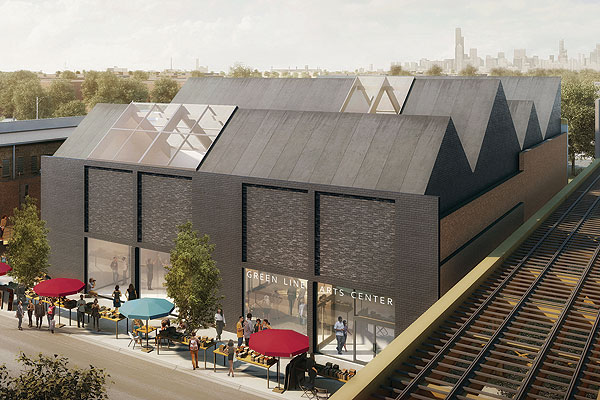Next year’s Chicago Architectural Biennial today announced its theme, or at least the seed of a dual theme: "the axis between history and modernity and the axis between architecture and art."
And at the intersection of those axes sit the Biennial’s newly announced artistic directors: Sharon Johnston and Mark Lee of the Los Angeles-based architecture and design firm Johnston Marklee.
They previously placed their footprint in the city with Grid Is a Grid Is a Grid Is a Grid Is a Grid, installed at the Museum of Contemporary Art for last year's Biennial and running through October 1. They're also working on a new master plan for the museum and collaborating with Theaster Gates on the Green Line Arts Center.
"We started our first projects in Marfa, Texas, so we've been working in communities shaped by art since the very beginning," Johnston says, referring to the isolated artistic destination in the Chihuahua Desert where Johnston Marklee broke through with work for the Lannan Foundation in 1998, the same year they started their firm. "So I think we were selected for the MCA because of that interest. It's been really incredible to understand the legacy of the role of art museums and the role of art in shaping the city of Chicago; the museum in the park legacy."


"Before, the only thing we knew about the city was as tourists and architecture students," Lee says of their work in Chicago. "We know the iconic buildings very well. Coming here at a more frequent pace, you get to appreciate not necessarily the top-tier buildings, but how the other buildings are very high quality. The Le Baron Jenney buildings, the late-19th-century buildings. I really appreciate those."
Their firm has a reputation for restrained, geometric, but not necessarily conservative minimalism, as exemplified by their 2013 Vault House and 2009 View House, described as "deceptively simple" and "the antidote to wild." And the second aspect to the nascent theme of the Biennial is grounded in this approach—architects moving forward by being grounded in history rather than through the excess of the L.A. School that preceded them.
"We feel the last 20, 30 years have been about breaking new ground. So much about it is the latest and the new, which is still valid, but for us and for a newer generation of architects, we're interested in how new things come from old things, and how it comes from the fabric of the city," Lee says. "It's not about building a UFO that suddenly popped up in the middle of nowhere—which I'm grateful they're building, but it's not necessarily good for the city.
"Sometimes it's important to have these special buildings, not to thwart those buildings, but they make up one percent of our city fabric. Ninety-nine percent of buildings are everyday buildings."
Joining them, as executive director, is Todd Palmer, an architecturally trained curator and the associate director of the National Public Housing Museum, a long-itinerant project that had one of its longest runs as an exhibit at the 2015 Biennial.
"I learned how impactful the Biennial can be for institutions in the neighborhood," Palmer says. "We'd never been open to the public consistently before. We learned about who that public is, we exchanged ideas with practitioners in the field. A year later, we have the groundwork for a 99-year lease with the housing authority. That happened yesterday."
Palmer is referring to a vote in which the Chicago Housing Authority approved the NPHM's lease for half the building, at 1322 W. Taylor, the last building of the decommissioned Addams Homes. So as the temporary Biennial opens, with its reflection on building new architecture from the old, the museum's permanent home will begin taking shape in the city's oldest public housing project.



